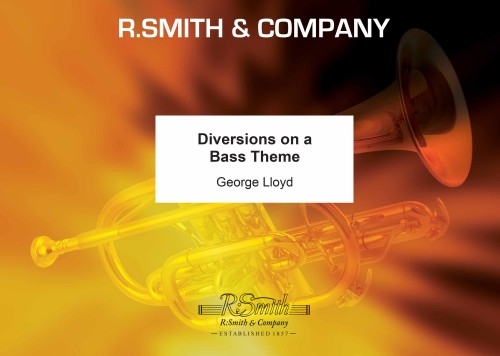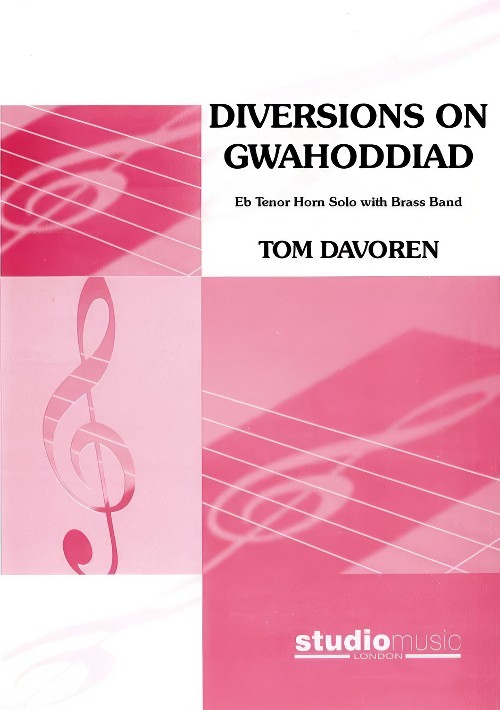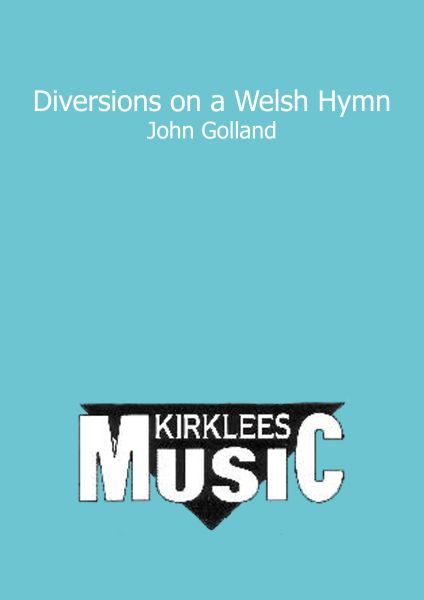Results
-
 £37.95
£37.95Diversions (Variations on a Swiss Folk Song) (Brass Band - Score only) - Sparke, Philip
Suitable for 2nd Section BandsIncludes: 1. Vivo scherzando, 2. Subito meno mosso, 3. Lento expressivo, 4. Vivace.Recorded on Polyphonic QPRL204D Family Portrait, Point of Ayr Colliery Band
Estimated dispatch 7-14 working days
-
 £35.00
£35.00DIVERSIONS ON A BASS THEME (Brass Band - Score only) - Lloyd, George
Extra Score. National Brass Band Championships of Great Britain Section 1 Finals 2010 .
Estimated dispatch 7-14 working days
-
 £69.95
£69.95DIVERSIONS ON A BASS THEME (Brass Band Set)
Estimated dispatch 7-14 working days
-
 £42.95
£42.95DIVERSIONS ON CALON LAN (Trombone/Brass Band) - Davoren, Tom
Recorded on Polyphonic QPRL234D Master Brass Vol. 22
Estimated dispatch 7-14 working days
-
 £42.95
£42.95DIVERSIONS ON GWAHODDIAD (E flat Tenor Horn/Brass Band) - Davoren, Tom
.
Estimated dispatch 7-14 working days
-
 £69.95
£69.95Diversions on a Bass theme (Brass Band - Score and Parts)
Estimated dispatch 7-14 working days
-
 £25.00
£25.00Diversions on a Welsh Hymn
Estimated dispatch 7-14 working days
-
£8.95
Diversions on Gwahoddiad
This intermediate piece celebrates the lyrical side of tenor horn as well the virtuosic technical ability of many of today's leading horn players, all through exploring Jon Roberts beautiful Welsh hymn tune, Gwahoddiad.
Estimated dispatch 7-14 working days
-
 £62.00
£62.00Montage (Score only) - Peter Graham
Each of the movements of the symphony take as their starting point forms originating in music of the 16th and 17th centuries. The first, an intrada, introduces the main thematic material (based on the interval of a minor third) in its embryonic state. As the piece progresses, this material is developed and manipulated in a variety of ways. The interval of the third remains central to the overall scheme of the work, even unifying the three movements on a tonal plane (I: F (minor); II: A flat (major); III: C flat (minor). The internal structure of the intrada is an arch form: ABCBA, roughly modelled on the first movement of Concerto for Orchestra by Witold Lutoslawski, to whose memory the movement is dedicated. A chaconne follows - the basic material now transformed into expansive solo lines underpinned by a recurring sequence of five chords (again, a third apart). The movement's structure combines both ternary form and golden section principles and the chaconne's continuous cycle of chords may be visualised as circles. The final movement, a rondo, bears the dramatic weight of the entire work, as the underlying tonal tensions surface. A musical journey ensues, making diversions through lyrical territories as well as through more spiky, jazz-flavoured ones. The aural (and visual) montage is perhaps most apparent towards the climax of the piece, where three keys and polyrhythms sound simultaneously in the upper brass, xylophone, horns, and timpani. The climax itself combines the lyrical music heard earlier with the rondo theme, now presented by cornets and trombones in canon. The teleological thrust of the movement (if not the entire work) can be symbolized by the flight of an arrow, as it steers a predetermined course towards its target. Duration: 16:00
Estimated dispatch 7-9 working days
-
 £74.00
£74.00Montage (Parts only) - Peter Graham
Each of the movements of the symphony take as their starting point forms originating in music of the 16th and 17th centuries. The first, an intrada, introduces the main thematic material (based on the interval of a minor third) in its embryonic state. As the piece progresses, this material is developed and manipulated in a variety of ways. The interval of the third remains central to the overall scheme of the work, even unifying the three movements on a tonal plane (I: F (minor); II: A flat (major); III: C flat (minor). The internal structure of the intrada is an arch form: ABCBA, roughly modelled on the first movement of Concerto for Orchestra by Witold Lutoslawski, to whose memory the movement is dedicated. A chaconne follows - the basic material now transformed into expansive solo lines underpinned by a recurring sequence of five chords (again, a third apart). The movement's structure combines both ternary form and golden section principles and the chaconne's continuous cycle of chords may be visualised as circles. The final movement, a rondo, bears the dramatic weight of the entire work, as the underlying tonal tensions surface. A musical journey ensues, making diversions through lyrical territories as well as through more spiky, jazz-flavoured ones. The aural (and visual) montage is perhaps most apparent towards the climax of the piece, where three keys and polyrhythms sound simultaneously in the upper brass, xylophone, horns, and timpani. The climax itself combines the lyrical music heard earlier with the rondo theme, now presented by cornets and trombones in canon. The teleological thrust of the movement (if not the entire work) can be symbolized by the flight of an arrow, as it steers a predetermined course towards its target. Duration: 16:00
Estimated dispatch 7-9 working days
